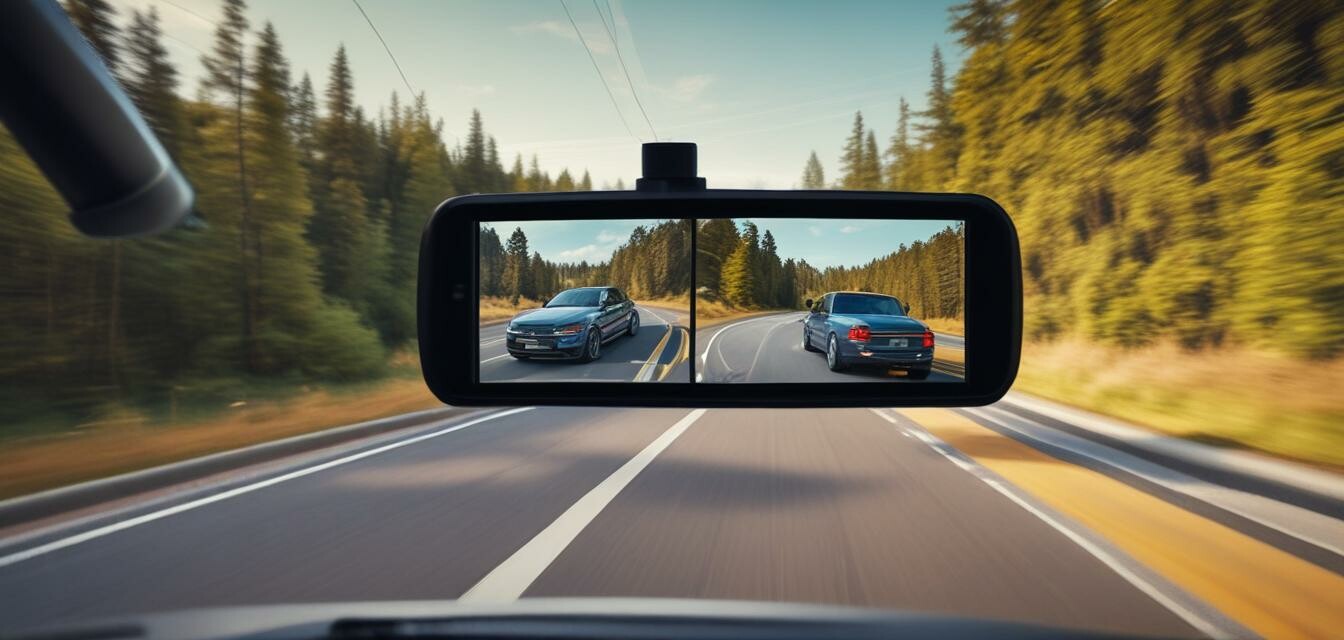
Analyzing Front vs. Rear Dashcams: Which is Better?
Key Takeaways
- Front dashcams are essential for capturing incidents occurring in front of your vehicle.
- Rear dashcams enhance safety by recording incidents happening behind your vehicle.
- Both front and rear dashcams offer unique benefits, making them valuable additions to your vehicle.
- Understanding the pros and cons helps in making an informed decision when choosing dashcams.
As technology advances, dashboard cameras have become integral for drivers seeking to enhance their vehicle's safety. With both front and rear dashcams available, it’s crucial to understand their differences and potential benefits. In this article, we’ll dive into the pros and cons of each type, ensuring you make a knowledgeable decision when selecting your camera setup.
Understanding the Importance of Dashcams
Dashcams provide drivers with peace of mind by capturing video evidence during accidents or unusual events on the road. This evidence can be pivotal in insurance claims and legal disputes. Depending on your driving habits and traffic conditions, you might benefit more from either a front-facing or a rear-facing dashcam.
Benefits of Front Dashcams
Front dashcams are the most common choice for drivers, as they focus on capturing incidents occurring directly ahead. Here’s a breakdown of their key benefits:
- Wide Field of View: Most front-facing dashcams provide a broad visibility range, ensuring you capture any events happening in front of your vehicle.
- High Resolution: Many front dashcams come with high-resolution video, allowing for clear identification of license plates and road signs.
- Incident Detection: With features like loop recording and G-sensor, front dashcams can automatically save footage of sudden events.
Limitations of Front Dashcams
Aside from their many advantages, front dashcams come with limitations:
- Blind Spots: Front cameras only capture incidents happening ahead, leaving blind spots that rear dashcams could cover.
- Single Coverage: Depending on the driving environment, having only a front-facing dashcam may not provide comprehensive security.
Benefits of Rear Dashcams
Rear dashcams are specifically designed to capture events occurring behind your vehicle. Below are their benefits:
- Enhanced Safety: Rear dashcams provide evidence in rear-end collisions, which are among the most common types of accidents.
- Parking Monitoring: Many rear dashcams incorporate parking modes, providing footage of your vehicle while it's parked.
- Peace of Mind: With a rear camera, you feel secure knowing you have necessary records of any incidents coming from behind.
Limitations of Rear Dashcams
While rear dashcams offer significant advantages, they also have some drawbacks:
- Limited Coverage: Like front dashcams, rear cameras do not capture events happening in other directions.
- Installation Complexity: Installing a rear dashcam can require more effort than a front camera, especially in terms of routing wires.
Comparison Table: Front vs. Rear Dashcams
| Feature | Front Dashcam | Rear Dashcam |
|---|---|---|
| Field of View | Broad view ahead | View of the road behind |
| Resolution | Typically high resolution | Varies but usually lower than front |
| Incident Detection | G-sensor enabled | May include parking mode |
| Overall Coverage | Single direction coverage | Single rear coverage |
| Installation | Usually simpler | May require more complex setup |
Choosing the Right Dashcam for Your Needs
Your choice between a front and rear dashcam will largely depend on your personal driving style and needs. If you primarily drive in heavy traffic where rear-end collisions are common, a rear dashcam could be essential. However, if you commute primarily on open roads or highways, a front dashcam might be more practical.
Combining Front and Rear Dashcams
For comprehensive coverage, many drivers opt to install both front and rear dashcams. This combination ensures that you capture incidents from all angles. Here are the benefits of having a dual setup:
- All-Around Protection: Enables you to record incidents occurring both in front of and behind your vehicle.
- Improved Insurance Claims: Having footage from both angles can greatly support insurance claims.
- Increased Value: Dual dashcam setups can enhance the resale value of your vehicle.
Pros
- Capture incidents from all angles with dual dashcam setup.
- Enhance safety with both front and rear footage.
- Maximize evidence support for insurance claims.
Cons
- Higher overall cost for dual dashcam systems.
- More complex installation required.
- Need to manage multiple camera settings and storage.
Conclusion
When choosing between front and rear dashcams, it’s essential to consider how each type addresses your specific driving needs. Both styles have unique benefits and limitations. Ideally, opting for both can provide your vehicle with the maximum protection on the road. For further insights, consider exploring our other resources on dual lens dashcams and making an informed decision.
Further Reading
To stay informed about various dashboard camera options, be sure to check out our other articles on buying guides, or look into specific comparisons within our feature comparisons section. With the right knowledge, you can choose the best dashcam setup for your vehicle.
